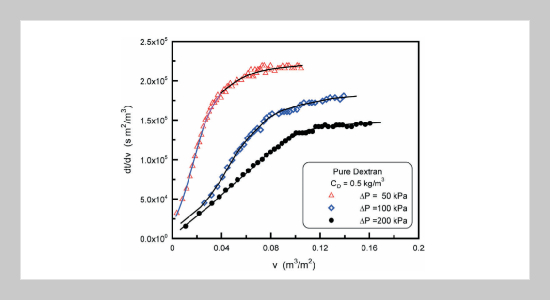Kuo-Jen Hwang This email address is being protected from spambots. You need JavaScript enabled to view it.1, Pei-Chun Tsai1, Eiji Iritani2 and Nobuyuki Katagiri2 1Department of Chemical and Materials Engineering, Tamkang University, Tamsui, Taiwan 251, R.O.C.
2Department of Chemical Engineering, Nagoya University, Furo-cho, Chikusa-ku, Nagoya 464-8603, Japan
Received:
December 12, 2011
Accepted:
April 11, 2012
Publication Date:
December 1, 2012
Download Citation:
||https://doi.org/10.6180/jase.2012.15.4.02
Polysaccharides are frequently produced by microbial metabolism or lysis in fermentation broths or bioreactors. This substance often causes membrane filtration difficulty. The polysaccharide concentration effects on the microfiltration characteristics of microbial cells are discussed in this study. Yeast and dextran are used as typical microbial cell and polysaccharide samples. The results show that polysaccharides play important roles in filtration performance. The filter cake exhibits a more compact structure and much higher filtration resistance when more dextran molecules pack into the yeast cake structure. Some dextran molecules also adsorb onto the walls in membrane pores, reducing the pore size, resulting in membrane fouling. The filtration resistances due to filter cake and membrane internal fouling are analyzed using filtrate volume versus time experimental data. These resistances increase significantly with the filtration pressure and dextran concentration. The cake properties in constant pressure microfiltration of yeast-dextran mixtures with different compositions are also analyzed. An increase in dextran concentration leads to lower cake growth rate, lower cake porosity and much higher average specific cake filtration resistance.ABSTRACT
Keywords:
Microfiltration, Membrane Filtration, Bio-Separation, Cake Properties
REFERENCES
















